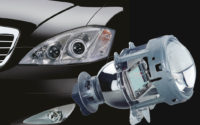Passenger Car segment to dominate the Baltic Tire Market
Increasing average life of vehicles and rise in demand for high performance tires is expected to drive the demand for Baltic tire market for the forecast period.
According to TechSci Research report, “Baltic Tire Market By Vehicle Type (Passenger Car, Light Commercial Vehicle, Medium & Heavy Commercial Vehicle, Two-Wheeler, Three-Wheeler and OTR) By Demand Category (OEM Vs Replacement) By Radial vs. Bias, By Region, Company Forecast & Opportunities, 2026”, The Baltic tire market is expected to witness significant growth in the forecast period. Tires are an essential part of the automobile industry and support the traction between tire and road while providing a cushion to absorb road shock. Tires are manufactured using materials such as carbon black, polyester, steel, silica, rayon, natural and synthetic rubber. Tires are responsible for several functions such as the transmission of brake and providing acceleration force to the ground, carrying the weight of the vehicle, maneuver the vehicle direction, and absorb shock from the ground. One of the significant factors responsible for the sale of tires is the increasing demand for passenger vehicles. Rising security concerns in addition to the implementation of stringent tire performance regulations, for example, wet grip-related braking distance reduction and the invention of fuel-efficient tires are expected to fuel the sales of the tire in the region. Advancements in technology are increasing the average life of vehicles thereby require the timely replacement of tires. Due to road construction and increased accessibility to remote areas the demand for tires is witnessing a boost in this region.
The COVID-19 outbreak across the world which has been declared as a pandemic by World Health Organization has affected several countries adversely. Leading authorities in the Baltic region-imposed lockdown restrictions and released a set of precautionary measures to contain the spread of novel coronavirus. Manufacturing units were temporarily shut down and disruption in the supply of raw materials was observed. After the departure of the first wave, companies are allowed to continue production with lower resources and volume production. Vehicle owners stayed at home which aided in delaying the tire replacement and maintenance and the shortage of cash crunch and falling economy affected the tire market adversely. However, high cost of raw materials and demand for retread tire is expected to restrain the market growth.
Browse XX Figures spread through XX Pages and an in-depth TOC on “Baltic Tire Market”.
https://www.techsciresearch.com/report/baltic-tire-market/7560.html
Baltic tire market is segmented into vehicle type, demand category, regional distribution, and company. Based on radial vs. bias, the radial segment is expected to account for major market share in the forecast period, 2022-2026. Radial tires have flexible sidewalls and reduce the consumption of fuel by the vehicle owing to the presence of less rolling resistance. These tires are more stable than the bias tire. Radial tire is smoother and has a longer lifespan than the bias tire. Based on vehicle type, the market can be divided into passenger car, light commercial vehicle, medium & heavy commercial vehicle, two-wheeler, three-wheeler, and OTR. The passenger car segment is responsible for major market share and is expected to dominate the tire market. The presence of disposable income and increasing vehicle ownership are the two significant drivers for this segment. The introduction of novel vehicles in the market by the major players is expected to surge the sales of tires in the region.
Bridgestone Europe NV / SA, Continental AG, Cooper Tires, Goodyear Dunlop Tires Baltic OÜ, Hankook Tires, Kumho Tires, Michelin, Pirelli, Toyo Tires, Yokohama are the leading players operating in Baltic tire market. Manufacturers are increasingly focusing on research and development process to fuel higher growth in the market. To meet evolving customer demand with respect to better efficiency and durability, several tire manufacturers are coming up with their technologically advanced offerings.
Download Sample Report @ https://www.techsciresearch.com/sample-report.aspx?cid=7560
Customers can also request for 10% free customization on this report.
“High-end investments by major market players for research and development activities to upgrade the existing infrastructure of tires and adoption of automation technology to produce different tires such as rimless tires, green tires, among others are expected to boost the demand for tires in the Baltic region. The use of lightweight elastomers and metals containing alloys or composite material of manganese bronze, nickel aluminum bronze, among others to increase the efficiency and performance of tires is expected to surge the sales of the tire. Majority of the Baltic tire market is import-driven therefore the use of attractive marketing campaigns and the production of quality tires is expected to propel the tire market growth till 2026” said Mr. Karan Chechi, Research Director with TechSci Research, a research based global management consulting firm.
“Baltic Tire Market By Vehicle Type (Passenger Car, Light Commercial Vehicle, Medium & Heavy Commercial Vehicle, Two-Wheeler, Three-Wheeler and OTR) By Demand Category (OEM Vs Replacement) By Radial vs. Bias, By Region, Company Forecast & Opportunities, 2026” has evaluated the future growth potential of Baltic tire market and provided statistics & information on market size, shares, structure and future market growth. The report intends to provide cutting-edge market intelligence and help decision makers take sound investment decisions. Besides, the report also identifies and analyzes the emerging trends along with essential drivers, challenges, and opportunities in the of Baltic tire market.
Contact
Mr. Ken Mathews
708 Third Avenue,
Manhattan, NY,
New York – 10017
Tel: +1-646-360-1656
Email: [email protected]



